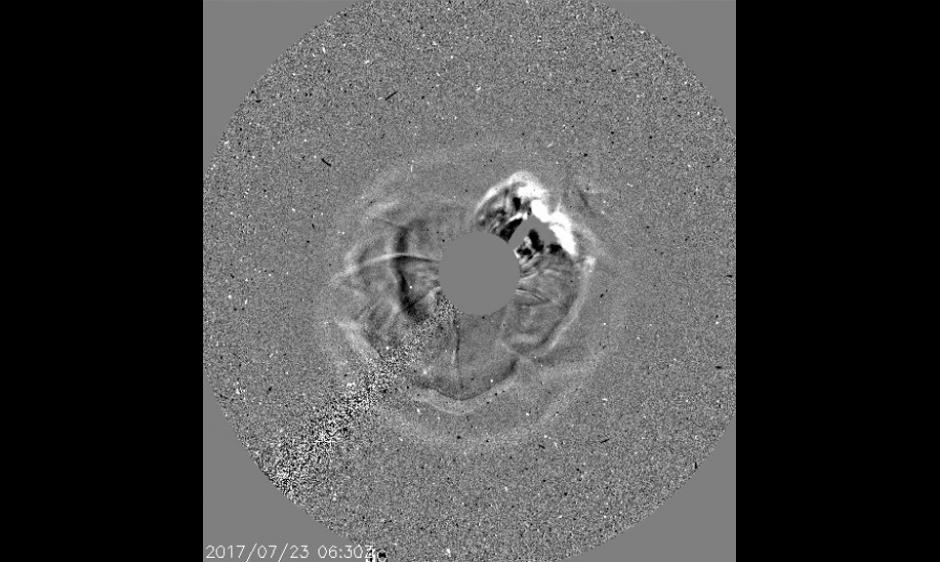
The Sun produced an impressive coronal mass ejection (CME) on July 23rd. While directed away from Earth, which is good news for us, the CME was intercepted by NASAs STEREO-A spacecraft, which is good news for scientists. Based on preliminary but incomplete data from STEREO-A, the CME was relatively fast and carried a strong magnetic field. This suggests that had it impacted Earth's magnetic field, significant geomagnetic storm activity may have occurred. However, ...it was half as fast and less intense than other notable CMEs, including another extreme event observed on the same day five years ago that also missed Earth but hit STEREO-A, the July 2012 event.
Old Region 2665 was associated with this most recent far-sided CME. This region should become visible to Earth-based observers again beginning July 30th, if it still has spots (The spot group can grow, shrink or even vanish on its transit across the far side). If forecasters can see the returning region, they'll assign a new region number and begin to analyze its size and magnetic complexity. Until then, it's tough to forecast the probability of further flares or eruptions. The region has been quiet and inactive since the 23 July, far-sided CME. For further updates, continue to visit our SWPC webpage.